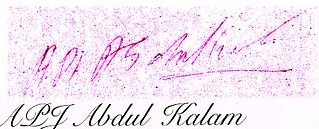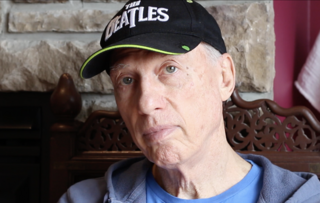Related Research Articles

Nuclear proliferation is the spread of nuclear weapons, fissionable material, and weapons-applicable nuclear technology and information to nations not recognized as "Nuclear Weapon States" by the Treaty on the Non-Proliferation of Nuclear Weapons, commonly known as the Non-Proliferation Treaty or NPT. Proliferation has been opposed by many nations with and without nuclear weapons, as governments fear that more countries with nuclear weapons will increase the possibility of nuclear warfare, de-stabilize international or regional relations, or infringe upon the national sovereignty of nation states.

Operation Smiling Buddha or Operation Happy Krishna was the assigned code name of India's first successful nuclear bomb test on 18 May 1974. The bomb was detonated on the army base Pokhran Test Range (PTR), in Rajasthan, by the Indian Army under the supervision of several key Indian generals.

William Norman McLaren, LL. D. was a Scottish Canadian animator, director and producer known for his work for the National Film Board of Canada (NFB). He was a pioneer in a number of areas of animation and filmmaking, including hand-drawn animation, drawn-on-film animation, visual music, abstract film, pixilation and graphical sound. McLaren was also an artist and printmaker, and explored his interest in dance in his films.
The Army Nuclear Power Program (ANPP) was a program of the United States Army to develop small pressurized water and boiling water nuclear power reactors to generate electrical and space-heating energy primarily at remote, relatively inaccessible sites. The ANPP had several accomplishments, but ultimately it was considered to be "a solution in search of a problem." The U.S. Army Engineer Reactors Group managed this program and it was headquartered at Fort Belvoir, Virginia. The program began in 1954 and had effectively terminated by about 1977, with the last class of NPP operators graduating in 1977. Work continued for some time thereafter either for decommissioning of the plants or placing them into SAFSTOR. The current development of small modular reactors has led to a renewed interest in military applications.

Anil Kakodkar, is an Indian nuclear physicist and mechanical engineer. He was the chairman of the Atomic Energy Commission of India and the Secretary to the Government of India, he was the Director of the Bhabha Atomic Research Centre, Trombay from 1996 to 2000. He was awarded the Padma Vibhushan, India's second highest civilian honour, on 26 January 2009.
Harold Michael Gray was an American writer, screenwriter, cinematographer, film producer and director.

The Lucens reactor was a 6 MW experimental nuclear power reactor built next to Lucens, Vaud, Switzerland. After its connection to the electrical grid on 29 January 1968, the reactor only operated for a few months before it suffered an accident on 21 January 1969. The cause was a corrosion-induced loss of heat dispersal leading to the destruction of a pressure tube which caused an adjacent pressure tube to fail, and partial meltdown of the core, resulting in radioactive contamination of the cavern.

The Douglas Point Nuclear Generating Station was Canada’s first full-scale nuclear power plant and the second CANDU pressurised heavy water reactor. Its success was a major milestone and marked Canada's entry into the global nuclear power scene. The same site was later used for the Bruce Nuclear Generating Station.

MH-1A was the first floating nuclear power station. Named Sturgis after General Samuel D. Sturgis, Jr., this pressurized water reactor built in a converted Liberty ship was part of a series of reactors in the US Army Nuclear Power Program, which aimed to develop small nuclear reactors to generate electrical and space-heating energy primarily at remote, relatively inaccessible sites. Its designation stood for mobile, high power. After its first criticality in 1967, MH-1A was towed to the Panama Canal Zone that it supplied with 10 MW of electricity. Its dismantling began in 2014 and was completed in March 2019.
The Rajasthan Atomic Power Station is a nuclear power plant located at Rawatbhata in the state of Rajasthan, India.
Nuclear power is the fifth-largest source of electricity in India after coal, gas, hydroelectricity and wind power. As of November 2020, India has 23 nuclear reactors in operation in 8 nuclear power plants, with a total installed capacity of 7,380 MW. Nuclear power produced a total of 43 TWh in 2020–21, contributing 3.11% of total power generation in India. 10 more reactors are under construction with a combined generation capacity of 8,000 MW.
Tony Ianzelo is a Canadian documentary director and cinematographer.
Eugene Boyko known to many as "Jeep", was a Canadian filmmaker who worked with the National Film Board of Canada. An early film of his, Helicopter Canada, was nominated for an Academy Award for Best Documentary Feature.
Padmanabhan Krishnagopala Iyengar, was an Indian nuclear physicist who is widely known for his central role in the development of the nuclear program of India. Iyengar previously served as the director of BARC and former chairman of the Atomic Energy Commission of India, he raised his voice and opposition against the nuclear agreement between India and the United States and expressed that the deal favoured the United States.
Shivram Baburao Bhoje is a distinguished Indian nuclear scientist who worked in the field of fast-breeder nuclear reactor technology for forty years in the design, construction, operation, and research and development. Indian government has honoured him with Padma Shri in 2003, the fourth highest civilian award in India, for his distinguished service to science and engineering fields.

Paul Saltzman is a Canadian film and television producer and director. A two-time Emmy Award-recipient, he has been credited on more than 300 films, both dramas and documentaries.
Chaitanyamoy Ganguly is an Indian nuclear scientist and a former head of the Nuclear Fuel Cycle and Materials Section of the International Atomic Energy Agency (IAEA), credited with many innovations in the field of nuclear material science. He was honored by the government of India in 2002, with the fourth-highest Indian civilian award of Padma Shri.

Albert Kish was a Canadian documentarian/filmmaker.
Robert Verrall is a Canadian animator, director and film producer who worked for the National Film Board of Canada (NFB) from 1945 to 1987. Over the course of his career, his films garnered a BAFTA Award, prizes at the Cannes Film Festival and Venice Film Festival, and six Academy Award nominations.
The 21st Canadian Film Awards were held on October 4, 1969 to honour achievements in Canadian film. The ceremony, attended by 1,200 people, was hosted by broadcaster Fred Davis.
References
- ↑ "Television Highlights". Ottawa Journal , June 5, 1968.
- ↑ Mayank Chhaya, "A 'juggernaut' rolls: The compelling story of the Canadian nuclear reactor's road travel in India in 1968". South Asia Monitor, March 25, 2022.
- ↑ "Best Damn Fiddler movie named film of the year". Regina Leader-Post , October 7, 1969.